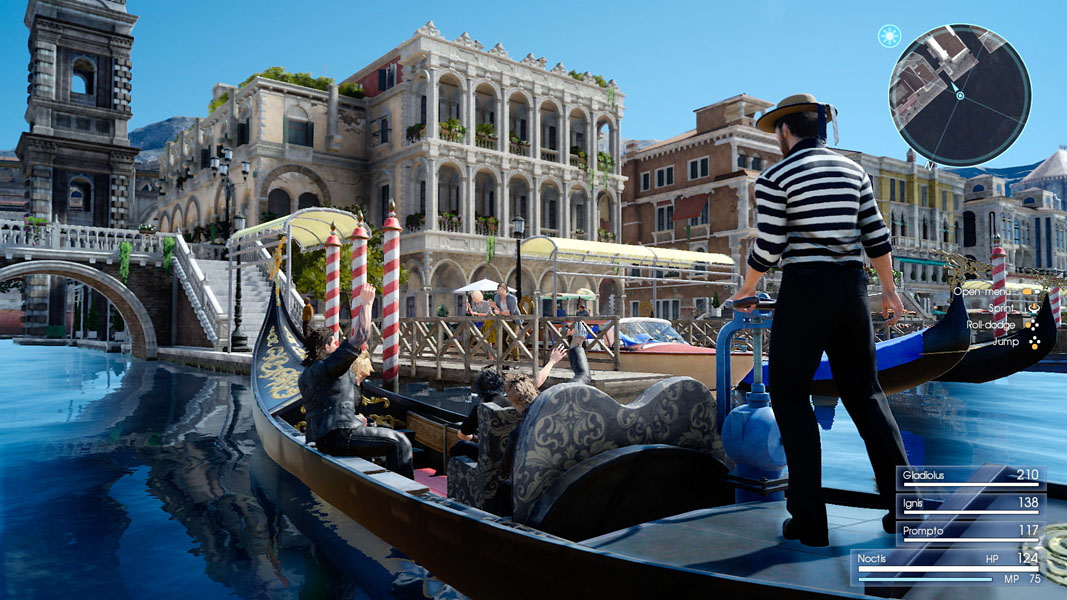November 2009. Ubisoft publishes the second episode of Assassin’s Creed, its famous historical series. After Acre, Damascus and Jerusalem, the French software house leads the gamers through the cities of the Italian Renaissance: Florence, Venice, Forlì, San Gimignano, Monteriggioni. Although Ubisoft, through the game, shows some historical and urban imprecision, it is actually a very accurate game, where exploration gets the better of action: the gamer becomes a tourist, exploring city alleys, observing churches and monuments and meeting historical characters. The fact that the tourist office of Monteriggioni proposes an itinerary through the places of the videogame is very meaningful, now showing the important impact that videogames can have on the value of an area for tourist purposes.

When we think of videogames that are connected with Italy, we think immediately of Assassin’s Creed II (and of its direct sequel set in Rome, Brotherhood), but the importance of Italy as setting of videogames is represented not only in this case. The most important developers and publishers seem to have rediscovered Italy. In Uncharted 4, developed by Naughty Dog and published by Sony in May 2016, the protagonist Nathan Drake lands in the Amalfi Coast, although any specific city isn’t mentioned and the Salerno Gulf is in the background. Italy, together with Greece and Spain, is a source of inspiration also for Dishonored 2 (Bethesda, 2016) and Just Cause 3 (Square Enix, 2015). The Falzarego Pass appears in Battlefield 1 (Electronic Arts, 2016).

Even in a very important Japanese blockbuster game like Final Fantasy XV (Square Enix, 2016) we can find pieces of Italy. The city of Altissia is clearly inspired by Venice. The City Upon the Water – as it is not casually named – is full of canals, bridges and architectures that definitely remind the Italian city. Furthermore, gondolas and typical Gondoliers appear in the game.

Another example of the love of the Japanese people for Italy, the “Belpaese”, is to be found in Bayonetta 2 (Nintendo, 2014). As we can read in the official blog of Platinum Games, inspections in a lot of cities were done, in order to create the city of Noatun: from Bruges in Belgium to Florence, Venice and Santa Margherita Ligure in Italy. The developers concentrated not only on the general appearance, but also on details such as the stone walkways, the shingles, the floral decorations and the knobs. They even made a photo report. Also the developers of The Coalition went to Italy to get the inspiration for the setting of Gears of War 4 (Microsoft, 2016): they visited the Fenestrelle Fort, the Dolomites and the star fort of Palmanova in Udine. IVIPRO has recently begun collaboration with the municipality of Palmanova in order to give value to the architecture and the history of the fort in videogames.

The big international publishers have started to rediscover Italy in the last years. And what about the Italian developers? They are no less so. Between the end of 2015 and the end of 2016 eight “made in Italy” games have been developed, which are strictly connected with the Italian culture and territory (and others are in development). They are an important sign of a new consciousness: the time has arrived where stories built on Italian culture are appearing in videogames. The touching game Venti Mesi (TN: Twenty Months) by the team We Are Müesli tells a story of liberation and resistance to nazi-fascism; in The Great Palermo the two storytellers from Milan bring the player to Palermo, to explore and discover secrets, traditions and habits of a crossroads of different cultures and ethnic groups. The Sicilian city and its secrets are the theme also of Occultus – Cabala Mediterranea (Sylphe labs). In The Town of Light by the Tuscan LKA.it the player explores Volterra’s ex-mental hospital to discover the painful past of a patient, who was interned before the “Law Basaglia” decreed the closure of all mental hospitals. Wheels of Aurelia (Santa Ragione) is a road trip game set on the Roman road “Via Aurelia” during the turmoil of the delicate 1970s. It’s a game that focuses on the socio-political scene of the period. Frecce Tricolori Flight Simulator (Rortos) lets the users get into the cockpit and execute incredible aerobatic maneuvers. Toti Submarine VR Experience (MGM Software) and TOWERandPOWER (Studio Evil, Tyche Snc) are two interesting examples of the new frontier of videogames: the virtual reality. The first allows the player to explore the famous submarine Enrico Toti, which is nowadays conserved at the National Museum of Science and Technology “Leonardo da Vinci” in Milan; in the second the player is catapulted into Bologna in the Middle Ages to live a first person experience.
Italy in videogames? Not only Assassin’s Creed.